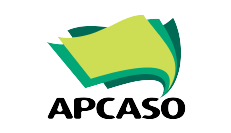This is the second in a series of case studies highlighting the results of the “Global Fund Realities on the Ground” a research study conducted by APCAS0’s APCRG Platform to measure civil society and communities’ experience when engaging in the key stages of country dialogue process under the Global Fund 2017-2019 funding cycle.
Among people living with HIV (PLHIV) in Pakistan, the youth have been keenly active in engaging and advocating for access to treatment and care while ensuring that policies address their specific needs and issues.
Young Key Populations (YKPs) in Pakistan have gained much from participating in the Global Fund’s Funding Cycle, and they acknowledged as much in the survey conducted by APCASO in 2018. When asked what factor influenced the level of engagement: the Youth Chapter of The Association of PLHIV (APLHIV) in Pakistan responded that “advocacy by the APLHIV for youth specific services, as well as involvement of youth in consultative processes, and a close working relationship with stakeholders” is what helped them engage more effectively in the funding process.
Their involvement in national health interventions is particularly vital in a country where more than 160,000 people are living with HIV. Moreover, the rate of infections is increasing among young men aged 15 to 30 years, where the prevalence among young people who inject drugs is over 59%. APLHIV’s network of organizations has been engaging through the Country Coordinating Mechanisms (CCMs) and have taken part in consultations, the development of the funding request and the country dialogues. The Youth Chapter respondent also mentioned that there was “a strong presence of the HIV community in the CCM fora”, where they could present data about young people at risk. They also noted that the inclusion of key populations in the funding cycle is a meaningful change in how civil society is engaged in this cycle.
Across the countries cited in the same survey, knowing the members of the CCM and knowing how to contact them is a critical factor for engagement, more so the frequency of contact. However, there is still a gap in this engagement, expressed in the level of satisfaction in the way civil society and communities are represented in the CCM, and the capacity of the CCM to create a conducive environment for civil society engagement.
One gap clearly identified in the study was the absence of an effective 2-way communication between the community representative in the CCM and the constituencies they were supposed to represent.
For the young key population and YPLHIV in Pakistan, these consultative mechanisms have meant a big difference in their engagement, because now they have seen that there is a platform available for YKPs, and also more availability of documented evidence for YKPs, which has boosted their advocacy for inclusion in national interventions.
CCM representatives and their constituencies can sustain these engagements by promoting the development of mechanisms, including regular in-person or virtual meetings if necessary. A bi-directional communication approach between CCM representatives and their constituencies should remain open, which the CCM can support. CCM, TA providers, and platforms such as the APCRG can provide support in developing key population engagement plans to strengthen the engagement of key populations, including young people in these populations, in the CCM.
Sources
APCASO APCRG, 2019. Global Fund: Realities on the Ground report https://apcaso.org/apcrg/wp-content/uploads/2020/01/Global-Fund-Realities-on-the-Ground_APCASO.pdf
https://theaplhiv.org.pk/portfolio-items/ykpsyplhiv/
Durrani, A.A, Horstman. R. 2019. National HIV Programme Pakistan Review 2019 (unpublished)
UNAIDS. Country data: Pakistan. https://www.unaids.org/en/regionscountries/countries/pakistan
(Photo courtesy of APLHIV)
